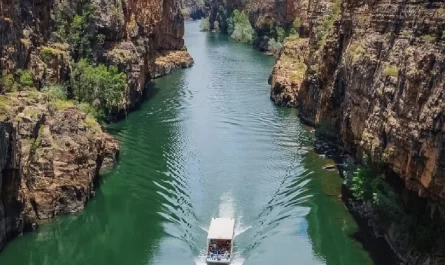Tasmania, the island state located south of the Australian mainland, had a different name in the past. Before it was known as Tasmania, it had various names throughout history. Let’s explore the historical names given to this beautiful island.
The Natives’ Name
Prior to the arrival of the British, Tasmania was inhabited by the Aboriginal people who had their own name for the island. They referred to it as ‘Truwana’ or ‘Lutruwita’ meaning “island” or “land across the sea” in their language.
The First European Encounter
In 1642, the Dutch explorer Abel Tasman became the first European to spot Tasmania during his voyage in the Southern Pacific. He named the island ‘Van Diemen’s Land’ after the Governor of the Dutch East Indies, Anthony van Diemen. This name remained for more than a century.
The British Arrival
In 1772, the British explorer, Captain James Cook, sailed around the island without realizing it was separate from mainland Australia. It wasn’t until 1798 when another British explorer, George Bass, proved Tasmania was an island. Following this discovery, the British took a renewed interest in the region.
The Name Change
In 1803, Lieutenant Governor David Collins established a British settlement on the island. After the arrival of more settlers, the name ‘Van Diemen’s Land’ became commonly used. However, due to its association with penal colonies, the name gained a negative connotation.
In 1856, the British Colonial Office decided to rename the island to separate it from its troubled past. The new name, ‘Tasmania’, was given in honor of Abel Tasman, the Dutch explorer who first encountered the island. The name change reflected a desire to rebrand the island and move away from its convict history.
The Legacy

Since then, Tasmania, or Tassie as it is affectionately known to locals, has become an integral part of Australia. It is renowned for its stunning landscapes, unique wildlife, and rich cultural heritage.
In conclusion, Tasmania was initially known as ‘Truwana’ by the Aboriginal people, then ‘Van Diemen’s Land’ by the Dutch and British settlers, and eventually renamed ‘Tasmania’ to disconnect from its convict past. The name change marked a new era for the island, which has flourished as a captivating destination with its own distinct identity.
- Tasmania was originally called ‘Truwana’ or ‘Lutruwita’ by the Aboriginal people.
- The Dutch explorer Abel Tasman named it ‘Van Diemen’s Land’ in 1642.
- The British settled on the island and continued using the name ‘Van Diemen’s Land’.
- In 1856, the British renamed it ‘Tasmania’ to distance it from its convict past.
In summary, the British called Tasmania ‘Van Diemen’s Land’ until it was renamed to ‘Tasmania’ in 1856.



